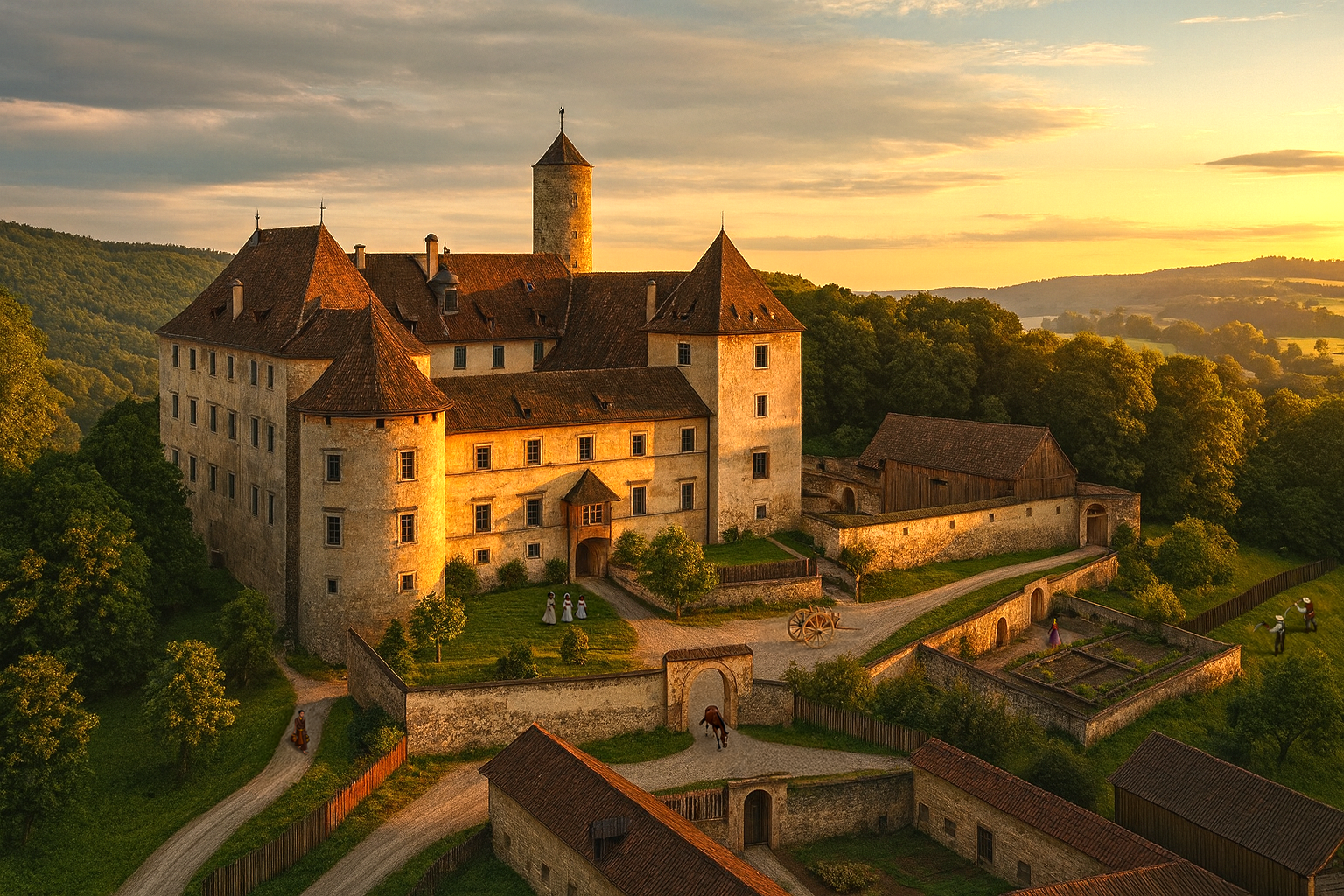Bogenšperk Castle
 GRADOVI GRADOVI
virtual excursion (2021)
virtual excursion (2008)
Bogenšperk Castle (Wagensperg) is a castle from the 16th century in the municipality of Šmartno pri Litiji, Central Slovenia.
He is best known for his association with 17th-century scientist and naturalist Johnn Weichard von Valvasor, a member of the Royal Society in London.
Renaissance castle, is located 3km southeast of Šmarna pri Litiji and stands on a low hill at an altitude of 412 m. The castle has been completely restored and is listed as an important cultural monument of Slovenia. The three-storey building consists of four tracts from several time periods that connect four towers and surround the arcaded inner courtyard. The oldest part of the castle is the north tower, which originally stood as a stand-alone fortress. Later, a wooden bridge was added connecting it to the southeast tower, which originally served a defensive purpose and was once much taller than the rest of the building. In 1759, a lightning strike ignited a fire that severely damaged the tower, but the tower was never restored to its original level.
In its present form, the castle was probably started by the noble house of Wagen as a replacement for the nearby castle of Lichtenberg Boltežar Wagen, which was already in ruins and badly damaged by a major earthquake in 1511. until it was finally bought in 1672 by Janez Vajkard Valvasor when he returned from abroad. It has been thoroughly renovated and is equipped with a graphic studio, a library, a printing house and a collection of attractions. Due to the extraordinary costs of publishing Valvasor's book The Glory of the Duchy of Carniola, Valvasor became heavily indebted and was forced to sell his valuable library first and in 1692 his estates. His family moved to Krško, while the castle changed several owners again, including the last noble family Windischgrätz, who abandoned the castle in 1943. While its interior was destroyed or looted, the castle itself survived the war intact and was in the immediate vicinity of the consequences turned into a military hospital. Since 1957, it has been occupied by the Jesuits, who have carried out some preventive maintenance on the building; in 1972, a systematic reconstruction began, initially led by art historian Milan Železnik.
Literature: Ivan Stopar, Gradovi na Slovenskom, Cankarjeva založba, 1986

Visualisation of Bogenšperk Castle - 17th century (by www.mojaslovenija.si)
|